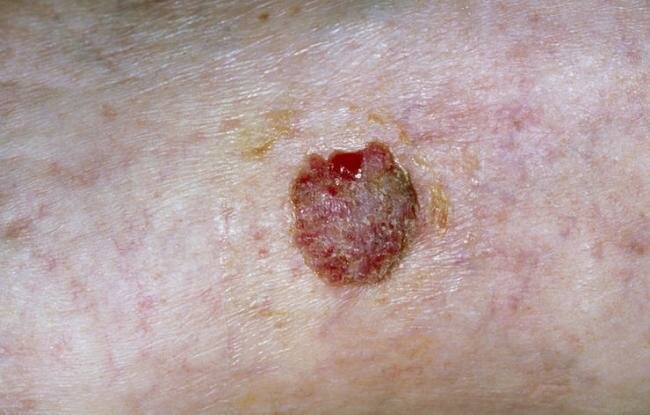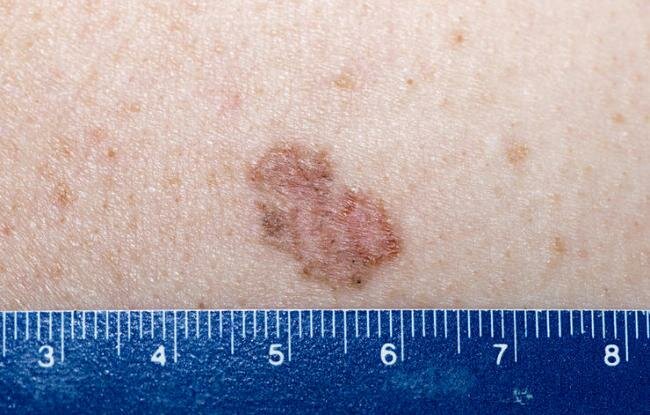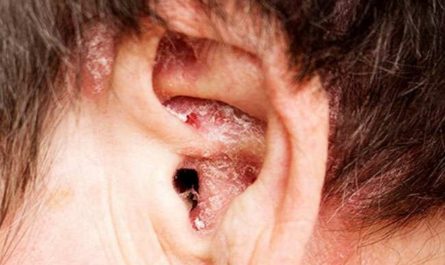There’s a great deal of information and guidelines available to aid you in spotting moles that are cancerous, however, other than the moles, there are several other essential signs you must look out for. For instance, melanoma, a kind of skin cancer that appears up as a bizarrely funky mole, which happens to be the most risky kind of skin cancer. However, melanoma isn’t the only type of skin cancer, and therefore, the emergence of a new mole or change in an existing one isn’t the only aspect that should cause alarm.
Skin derived cancers, such as squamous cells or basal cell, are known as the non-melanoma skin cancers since they are not derived from moles. In simpler words, these skin derived cancers don’t trigger the emergence of any kind of moles, and if you’re busy looking for moles the whole time, how will you spot non-melanoma cancers?

Research reveals that squamous cell and basal cell skin cancers are far more prevalent than melanoma, and therefore, it is imperative that we all educate ourselves about their symptoms, risks and signs. Furthermore, even melanoma has a series of severe symptoms that have very little do with moles.
Here, take a look at the 5 non-mole signs of skin cancer that you need to keep a look out for:
1. Red Scaly Lumps
Squamous cell carcinomas tend to exhibit their presence by triggering the emergence of warts or scabs-like red scaly lumps that can also be rough brown patches in certain cases. As is the case with all lesions and skin wounds, these horridly scaly lumps never go away. If the lesion or lump has resulted due to a normal skin tissue, it should take no more than a week or two to heal back to its normal state, however, if it doesn’t seem to budge, you must check it out at once.

2. Red Patches
Basal cell carcinomas is the most prevalent type of skin cancer, and it tends to trigger the appearance of tiny red patches of severely irritated skin. The patches tend to cause horrible itchiness, and once you begin scratching, the skin starts peeling.
The skin turns excessively dry, and if a cancerous skin lesion sprouts up, the immune system begins contacting and responding to these abnormal basal cells. This leads to a reaction that triggers severe inflammation, scaling or redness. It could be just a normal skin rash, but if it persists unusually, get it examined by your doctor.

3. Open Sores
Basal cell carcinomas often tends to trigger the emergence of open sores that can be bloody, or scabby, depending on the case. These sores tend to resemble the scabbiness that results due to a horrid case of sunburn.
However, a basal cell, unlike other cancer cells, doesn’t metastasize or spread all over the body, and chances of such happening are very few. But that doesn’t mean that basal cells aren’t risky or dangerous, if they appear near your mouth or eyes, they can badly distort your key features.

4. Craters
Squamous cell carcinomas, much like the basal cell carcinomas, aren’t fatalistic, but they can badly disfigure and distort your appearance. They tend to trigger the emergence of tiny craters that appear like tiny volcanoes with blood oozing out from the center.
If the crater refuses to budge for days and continues to expand, you must rush to the doctor and get it thoroughly examined.
5. Non-skin signs
Unlike basal cell and squamous cell carcinomas, melanoma doesn’t limit its growth by confining itself to the facial area. Instead, it spreads all over the body and triggers systemic disease. If the melanoma metastasizes, there are a range of symptoms that patients experience depending on the area where the cancer has attacked.
For instance, if melanoma is near your lungs, it will cause you to experience a shortness of breath. If it attacks your head, it blurs your vision and triggers severe headaches. It has a wide range of non-skin symptoms, and if you fail to catch this disease in its earliest stages, the chances of healing deplete severely. If a patient is experiencing this symptoms, it means that the melanoma has metastasized and it’s making its way towards the other body organs.
Doctors and medical experts can’t really predict the area where a melanoma may sprout out or spread its routes because this is a disease that tends to spread as much as it can and medical science has not yet managed to trace out a predictable pattern to follow up its course. Therefore, if we want to prevent this illness, we must nurture our skin, shower it with attention, and report to the doctor immediately when we spot something unusual and abnormal.
Remember, even if you contract skin cancer that isn’t fatalistic, it will distort your facial beauty by tainting it with patches and lumps. So, be more vigilant and take better care of yourself.




